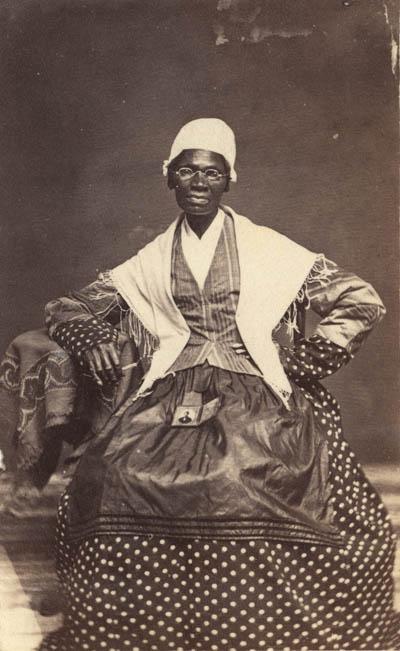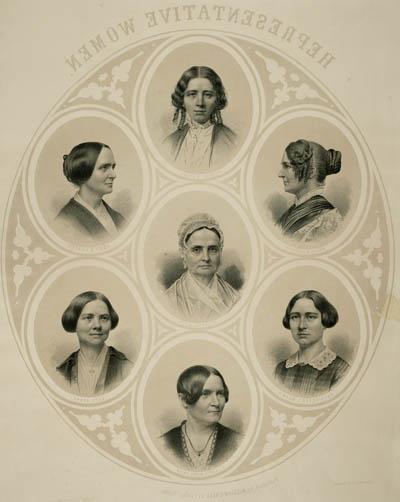Leading Massachusetts Suffragists
Massachusetts women quickly emerged as leaders in the suffrage movement. The Una, published in Providence and later in Boston, was the first women’s rights newspaper in the United States. The paper lasted from 1853 through 1855. Bostonian Caroline Dall regularly contributed to The Una. A reformer associated with many causes, Dall donated her journal, spanning 75 years, and other papers to the Massachusetts Historical Society.
After escaping slavery in New York, Sojourner Truth moved to Florence, Massachusetts, in 1844 and became part of a network of reformers. She traveled and lectured in support of women’s rights and against slavery. In the 1860s, Truth started selling carte de visite photographs at her lectures to support herself and her causes. Americans often gathered these small, inexpensive photographs in albums that they kept in their parlors.
In 1847, Lucy Stone graduated from Oberlin College and became the first Massachusetts woman to earn an undergraduate degree. Stone helped organize the first national women’s rights conventions in Worcester in 1850 and 1851. In 1869, she founded the American Woman Suffrage Association in Boston. Susan B. Anthony and Elizabeth Cady Stanton opposed passing the 15th Amendment, which granted black men the right to vote. Stone and her group supported the measure, and earned a larger following. The next year, she began The Woman’s Journal, a weekly that advocated for women’s suffrage until the 19th Amendment was adopted. When Stone died in 1893, Henry Brown Blackwell and Alice Stone Blackwell, Stone’s husband and daughter respectively, edited the newspaper.





